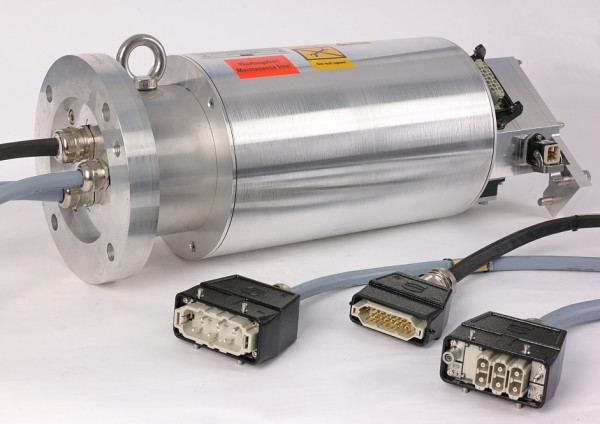Slip ring transmitters solve engineers’ long-standing challenge of transmitting electrical signals and power from stationary to rotating equipment. In this article, we will explain what a slip ring transmitter is, how it works, and its applications.
Answering the Questions
What Is a Slip Ring Transmitter?
A slip ring transmitter is an electromechanical device, also known as a rotating electrical interface, swivel, or electric swivel, commonly used in rotating machinery. The function of slip ring transmitters is to transmit power and signals from stationary sources to rotating equipment.
How Does a Slip Ring Transmitter Work?
The working principle of the slip ring transmitter is to transmit power and signal through the rotating interface, so it consists of the components fixed brush and rotating ring. Stationary brushes are in contact with the rotating ring, and as the ring rotates, the brushes remain in contact with it, enabling electrical signals to be transmitted across the interface. The brushes are usually made of graphite or carbon, while the rings are made of copper or other conductive material.
Applications of Slip Ring Transmitters
* For wind turbines: transfer power and signal from rotating blades to the stationary hub
* Used in cameras and video equipment: to transmit electrical signals from the camera body to the lens
* Used in military applications such as radar antennas and missile systems

Advantages of Slip Ring Transmitters
Slip ring transmitters have several advantages over other electrical transmission methods. They offer a continuous transmission of power and signals, which is important in applications where interruptions can be catastrophic. They also allow for 360-degree rotation without the need for additional cables or wiring, making them a more efficient and cost-effective solution.
Disadvantages of Slip Ring Transmitters
Despite their advantages, slip ring transmitters have a few disadvantages. They require periodic maintenance to ensure that the brush and ring remain in contact, which can be challenging in some applications. Additionally, slip ring transmitters can be affected by environmental factors such as humidity, temperature, and dust.
Conclusion
In conclusion, a slip ring transmitter is an electromechanical device that is used to transfer electrical power and signals across a rotating interface. It is commonly used in various industries and applications, including wind turbines, cameras, and military systems. While slip ring transmitters have several advantages, they also have a few disadvantages. If you have any questions or comments, please feel free to leave them below.
Frequently Asked Questions
Q: What Is the Difference Between a Slip Ring and a Commutator?
A: A slip ring is used to transfer electrical signals and power from a stationary device to a rotating one, while a commutator is used to reverse the direction of current flow in a motor.
Q: Can Slip Ring Transmitters Be Used in Hazardous Environments?
A: Yes, slip ring transmitters can be used in hazardous environments, provided they are designed and certified for use in such environments.
Have a custom project? Share your details with us and we will contact you soon.


